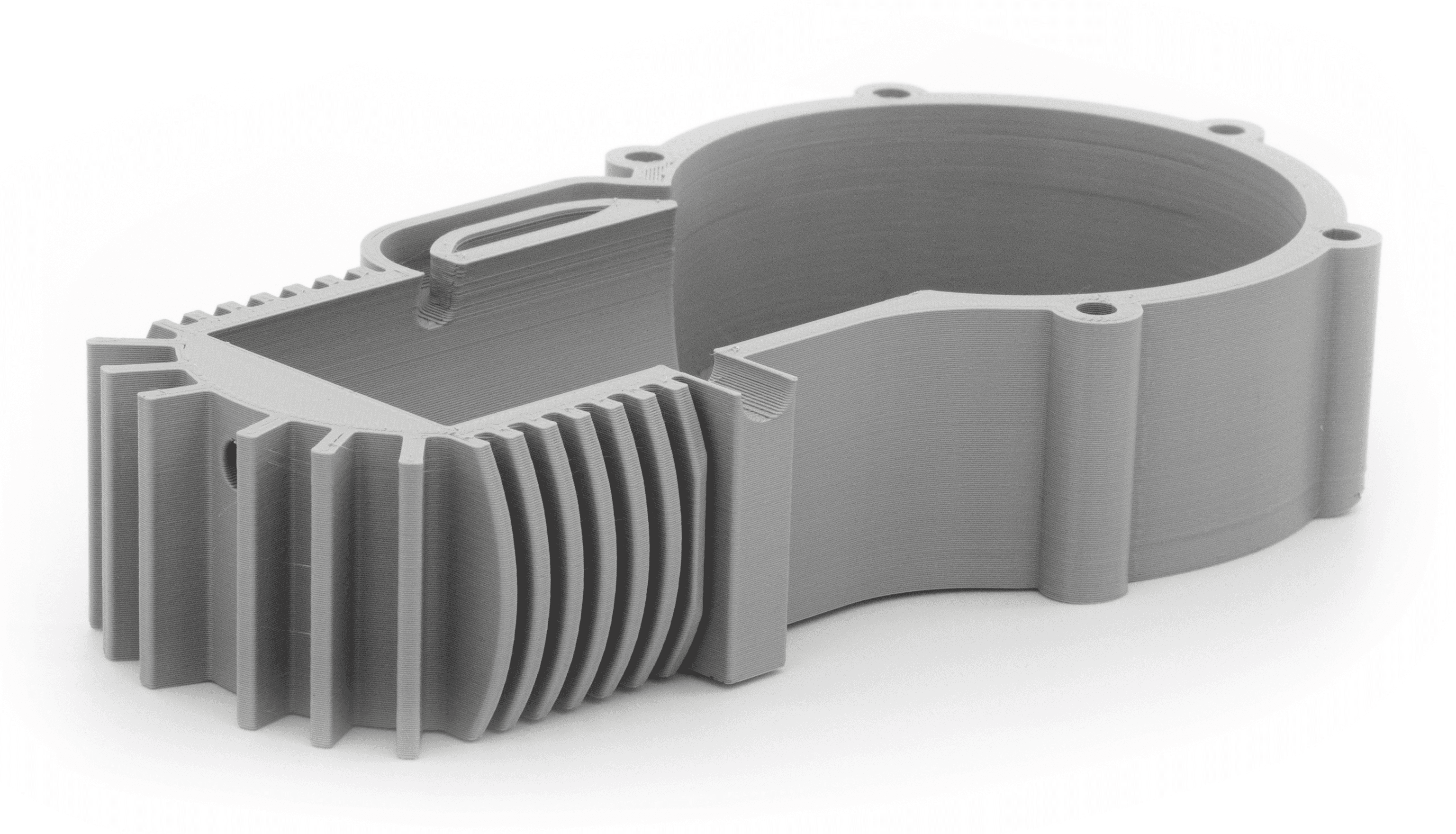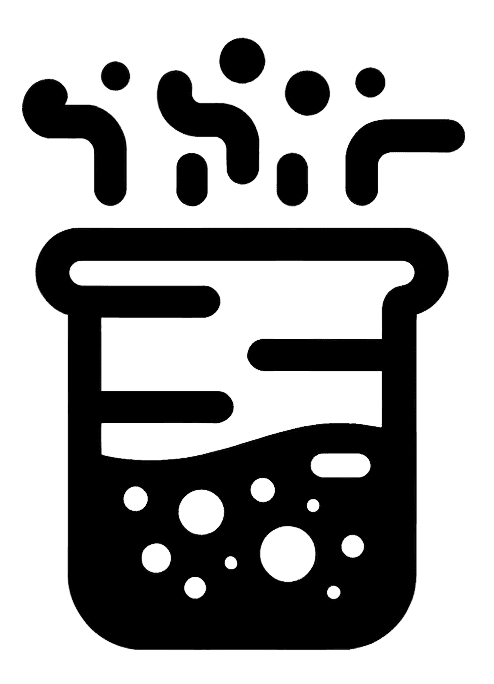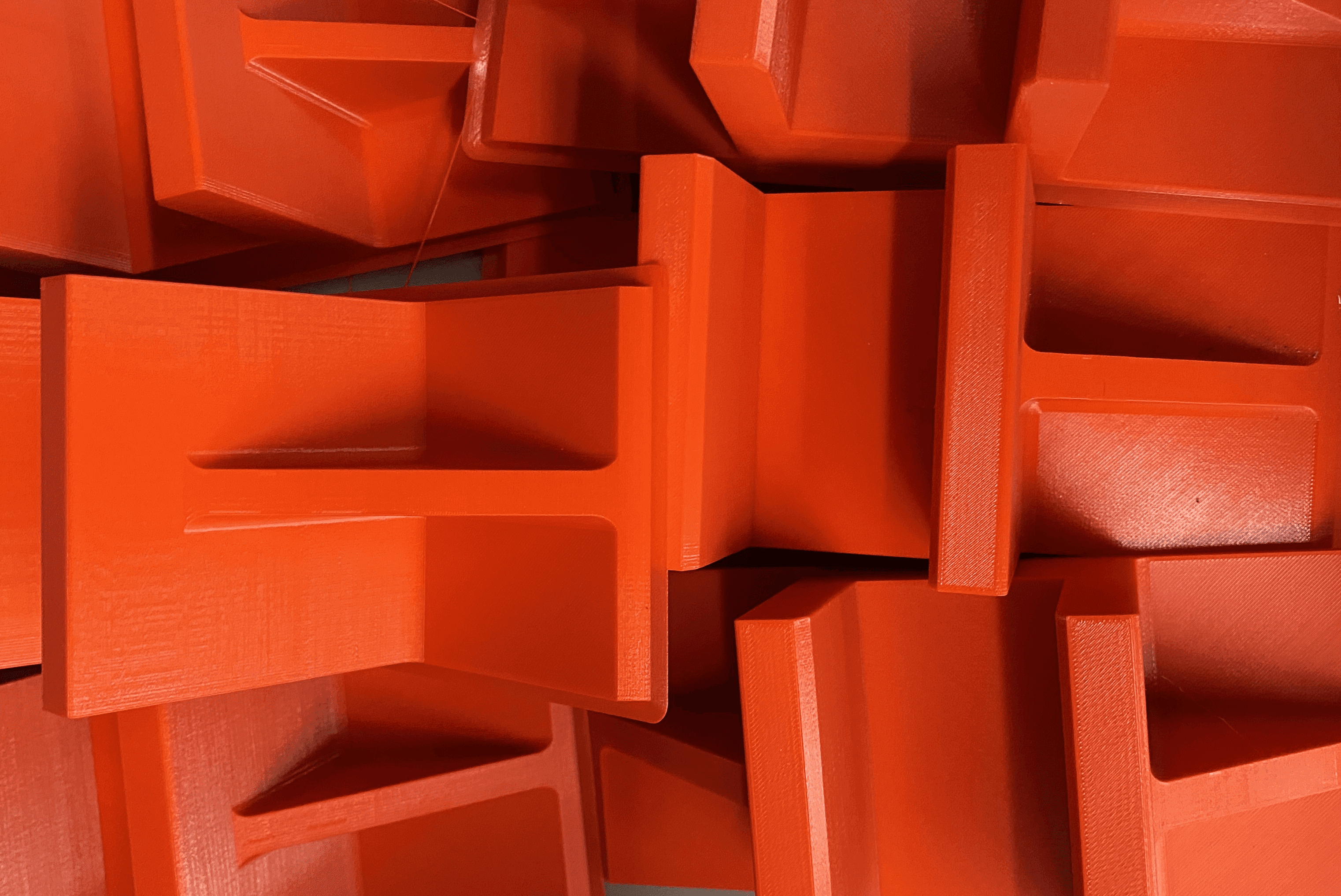

ABS
Technology:
ABS is an engineering material suitable for a wide range of applications, offering moderate strength and heat resistance.

Strong

High Temperature

Impact Resistant
ABS can withstand physical stresses and strains without breaking, making it suitable for creating functional prototypes, mechanical parts, and items that will be handled or used in real-world conditions.
Ideal Size ≤
256 x 256 x 256 mm
(10 x 10 x 10 in)
Resolution
0.16 - 0.4 mm

Colors
Black
White
Grey
Red
Blue
Economical
Max Size
Flexibility
Strength
Heat Resistance
Economical
Label
Max Size
Label
Flexibility
Label
Strength
Label
Heat Resistance
Label


Durability and Strength

Known for its toughness and resistance to impact, ABS is ideal for parts that require high strength and durability.
Durability and Strength

Known for its toughness and resistance to impact, ABS is ideal for parts that require high strength and durability.
Durability and Strength

Known for its toughness and resistance to impact, ABS is ideal for parts that require high strength and durability.
Heat Resistance

With a higher melting point compared to PLA, ABS parts endure higher temps without deforming.
Heat Resistance

With a higher melting point compared to PLA, ABS parts endure higher temps without deforming.
Heat Resistance

With a higher melting point compared to PLA, ABS parts endure higher temps without deforming.
Chemical Resistance

ABS is resistant to many acids, alkalis, alcohols, and oils.
Chemical Resistance

ABS is resistant to many acids, alkalis, alcohols, and oils.
Chemical Resistance

ABS is resistant to many acids, alkalis, alcohols, and oils.
Compare with other
FDM
materials
Material
Economical
Max Size
Flexibility
Strength
Heat Resistance
Specifications
Mechanical Properties
Shore Hardness
~72D
ISO 7619-1, GB/T 531.1
Shore Hardness
~72D
ISO 7619-1, GB/T 531.1
(XY) Tensile Modulus
2174 ± 285 MPa
ISO 527, GB/T 1040
(XY) Tensile Modulus
2174 ± 285 MPa
ISO 527, GB/T 1040
(XY) Tensile Strength
33.3 ± 0.8 MPa
ISO 527, GB/T 1040
(XY) Tensile Strength
33.3 ± 0.8 MPa
ISO 527, GB/T 1040
(XY) Elongation at Break
2.7 ± 0.4 %
ISO 527, GB/T 1040
(XY) Elongation at Break
2.7 ± 0.4 %
ISO 527, GB/T 1040
(XY) Bending Modulus
2844 ± 411 MPa
ISO 178, GB/T 9341
(XY) Bending Modulus
2844 ± 411 MPa
ISO 178, GB/T 9341
(XY) Bending Strength
72.8 ± 0.7 MPa
ISO 178, GB/T 9341
(XY) Bending Strength
72.8 ± 0.7 MPa
ISO 178, GB/T 9341
(XY) Charpy Impact Strength
12.6 ± 1.1 kJ/m2
ISO 179, GB/T 1043
(XY) Charpy Impact Strength
12.6 ± 1.1 kJ/m2
ISO 179, GB/T 1043
Thermal Properties
Glass Transition Temperature
101.1 °C
DSC 10°C/min
Glass Transition Temperature
101.1 °C
DSC 10°C/min
Decomposition Temperature
>380°C
TGA 20°C/min
Decomposition Temperature
>380°C
TGA 20°C/min
Vicat Softening Temperature
103.9 °C
ISO 306, GB/T 1633
Vicat Softening Temperature
103.9 °C
ISO 306, GB/T 1633
Heat Deflection Temperature (1.8MPa)
98.2 °C
ISO 75, 1.8MPa
Heat Deflection Temperature (1.8MPa)
98.2 °C
ISO 75, 1.8MPa
Heat Deflection Temperature (0.45MPa)
99.6 °C
ISO 75, 0.45MPa
Heat Deflection Temperature (0.45MPa)
99.6 °C
ISO 75, 0.45MPa
Chemical Resistance
Weak Acids
Not resistant
Weak Acids
Not resistant
Strong Acids
Not resistant
Strong Acids
Not resistant
Weak Alkalis
Resistant
Weak Alkalis
Resistant
Strong Alkalis
Resistant
Strong Alkalis
Resistant
Organic Solvent
Not resistant
Organic Solvent
Not resistant
Oils and Grease
No data available
Oils and Grease
No data available
Equilibrium Water Absorption
0.35%
Equilibrium Water Absorption
0.35%


Material Guide
What feature is most important for your parts?
Recommended Materials:
Material Guide
What feature is most important for your parts?
Material Guide
What feature is most important for your parts?

Capabilities
Explore
Applications

















